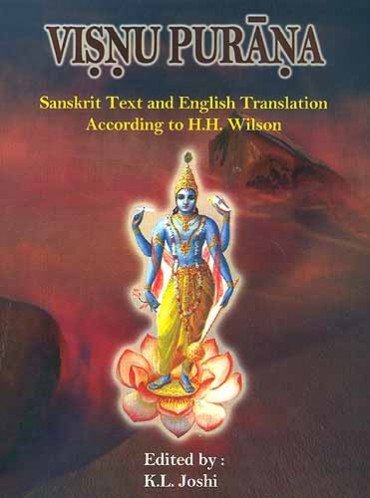The Vishnu Purana
by Horace Hayman Wilson | 1840 | 287,946 words | ISBN-10: 8171102127
The English translation of the Vishnu Purana. This is a primary sacred text of the Vaishnava branch of Hinduism. It is one of the eighteen greater Puranas, a branch of sacred Vedic literature which was first committed to writing during the first millennium of the common era. Like most of the other Puranas, this is a complete narrative from the cr...
Form of the Purāṇas
The invariable form of the Purāṇas is that of a dialogue, in which some person relates its contents in reply to the inquiries of another. This dialogue is interwoven with others, which are repeated as having been held on other occasions between different individuals, in consequence of similar questions having been asked. The immediate narrator is commonly, though not constantly, Lomaharṣaṇa or Romaharṣaṇa, the disciple of Vyāsa, who is supposed to communicate what was imparted to him by his preceptor, as he had heard it from some other sage. Vyāsa, as will be seen in the body of the work[1], is a generic title, meaning an ‘arranger’ or ‘compiler.’ It is in this age applied to Kṛṣṇa Dwaipāyana, the son of Parāśara, who is said to have taught the Vedas and Purāṇas to various disciples, but who appears to have been the head of a college or school, under whom various learned men gave to the sacred literature of the Hindus the form in which it now presents itself. In this task the disciples, as they are termed, of Vyāsa were rather his colleagues and coadjutors, for they were already conversant with what he is fabled to have taught them[2]; and amongst them, Lomaharṣaṇa represents the class of persons who were especially charged with the record of political and temporal events. He is called Sūta, as if it was a proper name; but it is more correctly a title; and Lomaharṣaṇa was ‘a Sūta,’ that is, a bard or panegyrist, who was created, according to our text[3], to celebrate the exploits of princes; and who, according to the Vāyu and Padma Purāṇas, has a right by birth and profession to narrate the Purāṇas, in preference even to the Brahmans[4]. It is not unlikely therefore that we are to understand, by his being represented as the disciple of Vyāsa, the institution of some attempt, made under the direction of the latter, to collect from the heralds and annalists of his day the scattered traditions which they had imperfectly preserved; and hence the consequent appropriation of the Purāṇas, in a great measure, to the genealogies of regal dynasties, and descriptions of the universe. However this may be, the machinery has been but loosely adhered to, and many of the Patinas, like the Viṣṇu, are referred to a different narrator.
An account is given in the following work[5] of a series of Paurāṇik compilations, of which in their present form no vestige appears. Lomaharṣaṇa is said to have had six disciples, three of whom composed as many fundamental Saṃhitās, whilst he himself compiled a fourth. By a Saṃhitā is generally understood a ‘collection’ or ‘compilation.’ The Saṃhitās of the Vedas are collections of hymns and prayers belonging to them, arranged according to the judgment of some individual sage, who is therefore looked upon as the originator and teacher of each. The Saṃhitās of the Purāṇas, then, should be analogous compilations, attributed respectively to Mitrayu, Śāṃśapāyana, Akritavraṇa, and Romaharṣaṇa: no such Paurāṇik Saṃhitās are now known, The
substance of the four is said to be collected in the Viṣṇu Purāṇa, which is also, in another place[6], itself called a Saṃhitā: but such compilations have not, as far as inquiry has yet proceeded, been discovered. The specification may be accepted as an indication of the Purāṇas having existed in some other form, in which they are no longer met with; although it does not appear that the arrangement was incompatible with their existence as separate works, for the Viṣṇu Purāṇa, which is our authority for the four Saṃhitās, gives us also the usual enumeration of the several Purāṇas.
Footnotes and references:
[1]:
p. 272.
[2]:
See P. 276.
[3]:
P. 102.
[4]:
Journ, Royal As. Soc. vol. V. p. 281.
[5]:
P. 283.
[6]:
P. 5.
